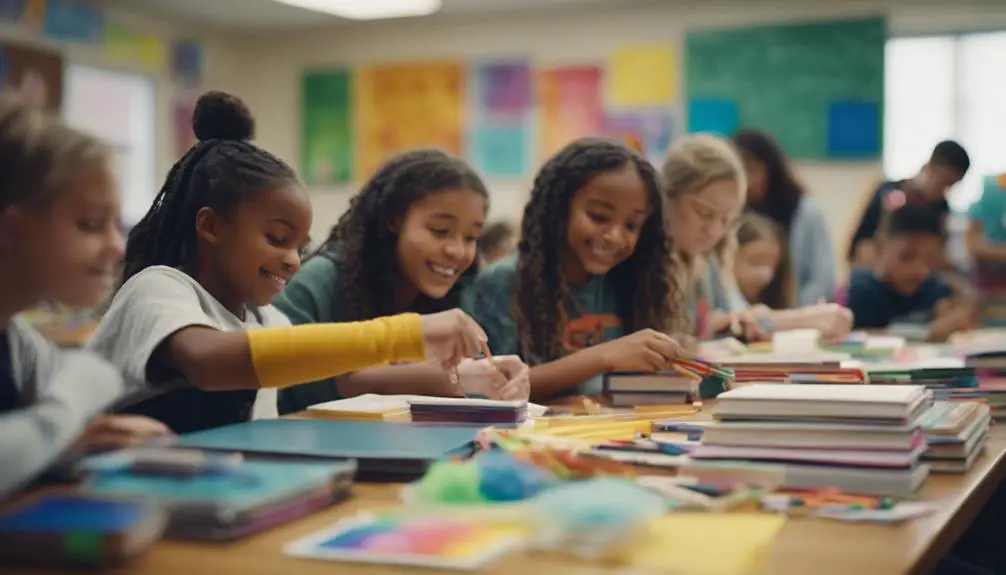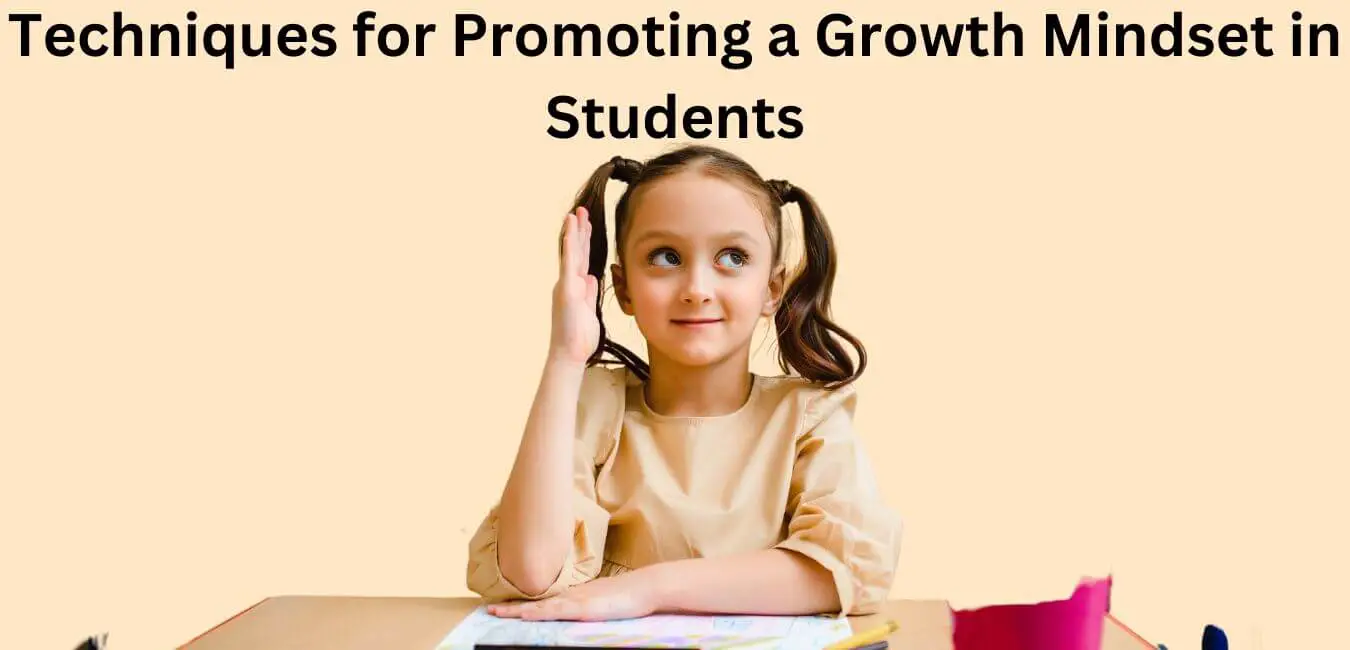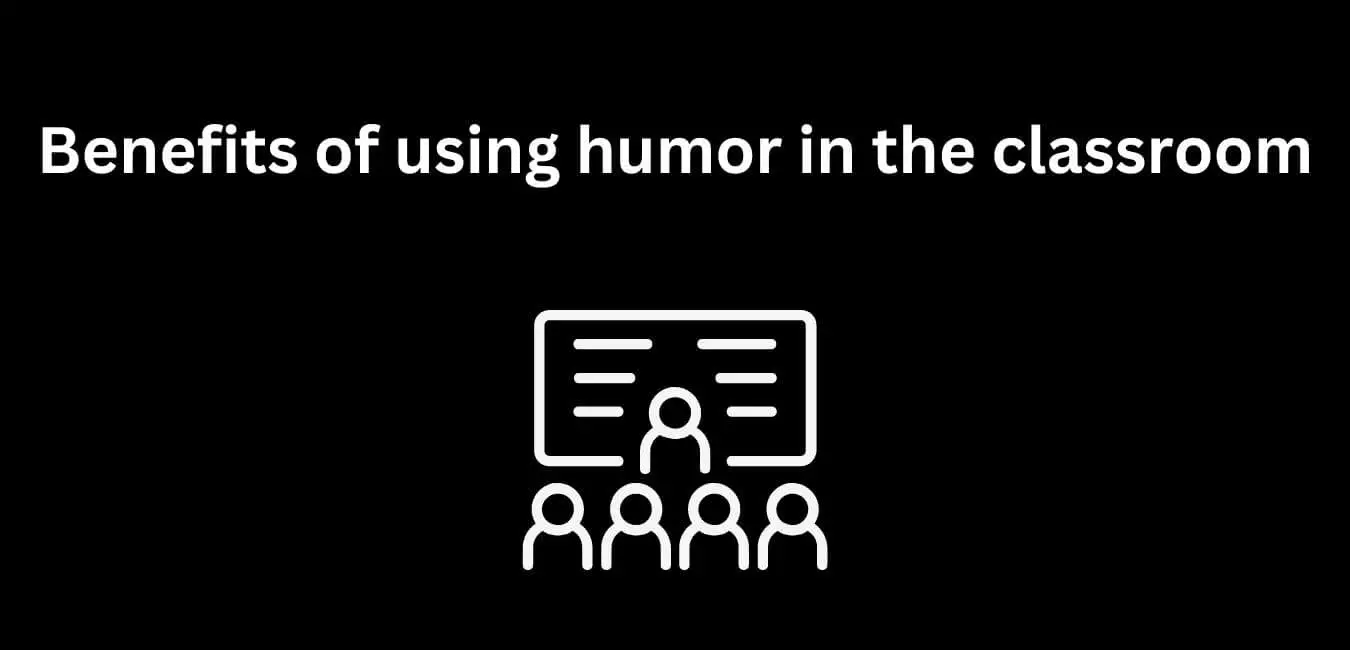When it comes to promoting intrinsic motivation in my classroom, I see it as nurturing a garden, where each seed of curiosity requires specific conditions to thrive.
One approach that consistently stands out is fostering a sense of autonomy among students. By giving them choices and control over their learning, I empower them to take ownership of their education. This autonomy encourages them to engage more deeply with the material and develop a genuine interest in learning.
For instance, allowing students to select topics for projects or decide how to demonstrate their understanding of a concept can significantly increase their motivation and investment in the learning process.
By empowering students in this way, I create a learning environment where curiosity and self-motivation flourish, leading to richer educational experiences for all.
My 25 Tips I use To Promote Intrinsic Motivation among my students in My Classroom

In my classroom, I employ various techniques to foster intrinsic motivation among my students.
From establishing clear objectives to promoting self-reliance and independence, my 25 strategies are designed to stimulate introspection and cultivate a sense of curiosity.
Ultimately, these techniques offer meaningful choices that ignite a passion for learning.
Set Clear Goals
Setting clear and specific objectives in the classroom is crucial for boosting students’ intrinsic motivation. Engaging students in the goal-setting process empowers them to define what they want to accomplish.
Regular progress checks help track their advancement and provide necessary support. Personalized encouragement and rewards for reaching milestones keep students motivated.
Having accountability partners fosters a supportive environment where students help each other stay on course. Positive reinforcement, like verbal praise or small incentives, reinforces the importance of working towards their set goals.
Encourage Self-Reflection
Engaging students in self-reflection is crucial for fostering intrinsic motivation in my classroom. One effective method is through reflective journaling, where students can regularly jot down their thoughts, challenges, and successes. This practice helps them become more self-aware and accountable for their learning journey.
Setting realistic yet challenging goals also plays a significant role in keeping students motivated and focused. By encouraging students to set goals, they can track their progress and celebrate their achievements along the way.
Additionally, incorporating self-assessment strategies empowers students to evaluate their own performance, further enhancing their sense of ownership over their learning. By providing the necessary tools and guidance, students can actively participate in their educational growth, leading to increased motivation and engagement.
Foster Independence and Autonomy
To promote independence and autonomy in the classroom, I focus on giving students the freedom to make their own choices and guide their learning. Helping students learn to regulate themselves is crucial in fostering a sense of ownership over their education.
Building independence in students nurtures a culture of self-reliance and accountability, encouraging them to take responsibility for their actions. I believe that by empowering students to explore their interests and make decisions aligned with their passions, they’ll develop intrinsic motivation and engage more deeply in their academic endeavors.
This approach aims to instill a sense of drive and enthusiasm in students, leading them to excel in their learning journey.
Offer Meaningful Choices
In my classroom, I offer students a variety of meaningful choices to boost their motivation and engagement. Through activities that allow for personal preferences, decision-making chances, and autonomy encouragement, I empower students with options that matter.
Students can pick from different assignments or projects based on their interests, engage in setting classroom rules, or choose study topics, and decide how they want to showcase their comprehension of a concept. Providing these meaningful options not only fosters a sense of ownership but also motivates students to actively participate in their learning journey, leading to increased satisfaction and drive.
Nurture Curiosity and Inquiry
Promoting curiosity and inquiry in the classroom is vital for sparking students’ intrinsic motivation. Encouraging them to ask ‘why’ and ‘how’ questions, engaging in hands-on exploration, fostering group discussions for idea sharing, and assigning research projects on topics of interest are effective strategies.
By exploring these methods, students develop critical thinking skills and problem-solving abilities. Delving into inquiry-based learning nurtures a natural drive to learn, ultimately enhancing their engagement with the material.
Embrace Creativity and Innovation
To boost intrinsic motivation among your students, consider infusing creativity and innovation into your classroom through the following approaches:
- Exploring creativity: Encourage students to uncover new ideas freely, creating a supportive environment that values original thinking.
- Unraveling innovative methods: Challenge students to think beyond conventional solutions, prompting them to tackle problems from diverse perspectives to foster innovative strategies.
- Delving into imaginative solutions: Present real-world scenarios that demand creative problem-solving, empowering students to devise unique and inventive answers to complex challenges.
Promote Growth Mindset
Promoting a growth mindset is crucial for my students’ development. I use various activities to encourage this mindset, such as praising efforts over outcomes and highlighting challenges as opportunities for learning.
Setting achievable goals and offering constructive feedback are key strategies in fostering a growth mindset. This mentality not only enhances academic performance but also builds self-belief and resilience.
Ultimately, instilling a growth mindset empowers students to face challenges with confidence and determination, leading to long-term success both inside and outside the classroom.
Cultivate Intrinsic Interests
To enhance intrinsic motivation in my classroom, I focus on helping students discover and nurture their natural interests through personalized learning experiences.
This approach involves guiding students in recognizing what truly captivates them, tailoring assignments to align with their unique passions, and fostering a sense of curiosity and growth.
Provide Constructive Feedback
When giving feedback to students, I focus on specific, actionable suggestions to help them improve. Clear communication is crucial in this process to ensure students understand the feedback.
I point out their strengths and areas for growth, guiding them in the right direction. Creating a supportive and safe environment is key to building trust so students are open to receiving feedback and making changes.
Through constructive feedback, I aim to enhance learning outcomes in my classroom and foster intrinsic motivation among students.
Celebrate Small Victories
Acknowledging and celebrating small victories in the classroom is crucial for boosting students’ intrinsic motivation and creating a positive learning environment. Here’s how I make sure to celebrate my students’ achievements:
- Personalized Recognition: Each student’s accomplishment is individually acknowledged, emphasizing their unique strengths and efforts.
- Class Celebrations: We organize mini celebrations in class to collectively recognize and applaud small victories, fostering a sense of camaraderie and success.
- Positive Reinforcement: I offer verbal praise and small rewards to show appreciation for their hard work and dedication, motivating students to continue striving for excellence.
These strategies have a significant impact on my students, inspiring them to succeed and instilling a sense of continuous improvement. Celebrating progress not only boosts confidence but also encourages a growth mindset essential for long-term success.
Create a Supportive Environment
Creating a supportive environment in the classroom is crucial for fostering intrinsic motivation in students. Trust is a cornerstone; being honest, reliable, and empathetic builds a strong foundation.
Cultivating a community where every student feels valued and respected encourages open sharing of thoughts and ideas. Granting autonomy in their learning process promotes independence, allowing students to take charge of their education.
Offering guidance, assistance, and resources helps students overcome challenges. This environment challenges students to grow and celebrate their progress.
Foster a Sense of Belonging
Implementing these 25 tips has played a crucial role in nurturing a strong sense of belonging among my students and fostering intrinsic motivation in the classroom. To cultivate a supportive and inclusive environment, I concentrate on the following strategies:
- Engagement Activities: Initiate group discussions where students can express their thoughts and experiences, strengthening a sense of community.
- Promoting Collaboration: Foster teamwork and mutual respect through group projects and interactive learning activities.
- Establishing Connections: Utilize icebreaker activities and team-building exercises to help students form meaningful relationships with their peers.
Encourage Collaboration and Teamwork
To nurture collaboration and teamwork in my classroom, I focus on interactive activities and projects that encourage students to work together. Team building exercises are essential in developing communication skills and fostering a sense of community among students.
I promote peer collaboration through group projects, where students collaborate towards shared goals, fostering a spirit of mutual support and achievement. Cooperative learning is a key aspect of my teaching approach, as it helps students enhance their social skills and learn from each other’s strengths.
Problem-solving activities are integrated into lessons to emphasize the value of teamwork and leveraging individual abilities. This emphasis on collaboration creates a supportive environment where students are motivated to excel and feel valued.
Offer Opportunities for Self-Expression
In my classroom, I support students in expressing themselves through a variety of creative methods to nurture their inner drive. Creative outlets help them explore their thoughts and emotions, cultivating a sense of individuality and diverse viewpoints. Here are three ways I encourage self-expression among my students:
- Freedom in Art: Students are given the liberty to choose how they want to express themselves, whether through drawing, writing, music, or other art forms.
- Self-Discovery Sessions: I organize workshops where students can participate in activities that promote self-reflection and discovery, aiding them in connecting with their inner selves.
- Projects for Personal Expression: I assign tasks that empower students to openly share their thoughts, experiences, and beliefs, fostering confidence in expressing their true selves.
Incorporate Real-World Relevance
Imagine yourself immersing students in real-world scenarios to capture their interest and motivation. By exploring practical applications and hands-on activities, you can unravel the relevance of the content to their daily lives.
Use experiential learning that connects classroom concepts to authentic experiences, fostering a deep understanding and sparking curiosity. Picture this: a dynamic learning environment where students see firsthand the impact and significance of what they’re learning.
Be sure to use the power of real-world relevance to empower students and show them the practical value of their education beyond the confines of the classroom.
Utilize Gamification Strategies
Implementing gamification strategies in the classroom can significantly enhance students’ intrinsic motivation and engagement. Let’s delve into some effective approaches to achieve this:
- Game-Based Learning: Transforming educational content into a game format can make learning more interactive and enjoyable for students. By incorporating elements of competition, collaboration, and problem-solving, students can actively participate in their learning process.
- Reward Systems: Recognizing and rewarding students’ achievements is crucial in promoting continuous engagement and effort. By offering incentives such as badges, points, or leaderboards, students are motivated to strive for success and maintain their interest in learning.
- Engagement Strategies: Employing interactive challenges and activities can help sustain students’ interest throughout the learning journey. By integrating puzzles, quizzes, and group projects, educators can create a dynamic and stimulating learning environment that encourages active participation.
Emphasize Personal Development
To foster intrinsic motivation in my students, I focus on personal growth and development. Encouraging self-improvement is key to igniting their inner drive.
Engaging them in reflective activities helps set goals for advancement, boosting their motivation and sense of fulfillment. This approach empowers students to take ownership of their learning journey and inspires continuous self-improvement in academic and personal areas.
Recognize Individual Strengths
When it comes to teaching, I focus on harnessing each student’s unique strengths to ignite their passion for learning. This approach involves tailoring my support and encouragement to help students thrive in the classroom.
Here are three strategies I use to achieve this:
- Strength-Based Learning: I design lessons that cater to individual strengths, fostering a sense of engagement and enthusiasm for the subject matter.
- Personalized Recognition: I make a point to recognize and celebrate each student’s achievements in alignment with their personal strengths, which boosts their self-assurance and drive to succeed.
- Uncovering Personal Strengths: I collaborate closely with students to uncover their distinct abilities and help them recognize how these strengths can pave the way for their academic success.
Encourage Risk-Taking
Encouraging students to step out of their comfort zones and take risks is crucial for fostering intrinsic motivation in the classroom. To promote risk-taking, I implement various strategies.
I establish a safe and supportive environment where students feel encouraged to try new things. Providing positive reinforcement and constructive feedback plays a significant role in building their confidence. Emphasizing a growth mindset is vital, as it helps students see mistakes as opportunities for learning and personal growth.
Encouraging students to embrace challenges and see them as chances to progress is key. I promote innovation by giving students the freedom to explore their creativity and think outside the box. These strategies aim to spark curiosity and a passion for learning among students.
Promote a Sense of Ownership
In my classroom, I foster intrinsic motivation by empowering students to take ownership of their learning journey through a personalized approach that aligns with their interests and strengths. Cultivating an ownership mindset is crucial for students to feel responsible and empowered in their education. Giving students choices and involving them in decision-making processes helps create a sense of classroom autonomy, where they feel in charge of their academic development.
Encouraging students to invest personally in their learning not only boosts their motivation but also deepens their understanding of the material. This empowerment strategy helps students build a strong sense of ownership that motivates them to learn actively.
- Encourage students to set their own learning goals.
- Let students select projects or topics that spark their interest.
- Provide opportunities for students to reflect on their progress and adjust their strategies accordingly.
Emphasize Intrinsic Rewards
In my classroom, I prioritize highlighting the intrinsic rewards of learning to motivate my students effectively. I focus on fostering intrinsic satisfaction by linking lessons to personal fulfillment and inner drive. When students see the value in what they’re learning, they’re more likely to engage and excel.
Celebrating moments of success and growth reinforces the idea that learning is rewarding in itself. Encouraging students to set personal goals and reflecting on their progress cultivates a sense of accomplishment driven by their own aspirations.
Ultimately, nurturing a mindset that values intrinsic satisfaction can inspire a lasting love for learning that goes beyond external rewards.
Cultivate a Love for Learning
To foster a genuine love for learning in my students, I implement some practical strategies to nurture their intrinsic motivation in the classroom. Here are three key ways I cultivate this passion:
- Encouraging Curiosity Exploration: I create an environment where questions are valued, and students are encouraged to seek answers on their own. This approach sparks curiosity and a desire for learning.
- Facilitating Discovery of Passions: I offer opportunities for students to explore various subjects and interests, helping them uncover what truly excites them and fuels their love for learning.
- Promoting Enjoyment in Learning: Through interactive and stimulating lessons, I strive to make learning a joyful experience for students. This leads to intrinsic satisfaction and sustained motivation for learning.
Support Intrinsic Motivation
In my classroom, I focus on nurturing intrinsic motivation by promoting autonomy and mastery in students. Encouraging self-discovery helps spark their inner drive and personal empowerment.
I use diverse motivation strategies like setting meaningful goals, giving helpful feedback, and allowing choices in their learning. When students lead their education and progress, they build a strong internal motivation.
This approach enhances their learning journey and fosters a genuine love for knowledge and growth. By fostering autonomy and mastery, I aim to cultivate lasting intrinsic motivation in my students.
Foster a Growth-Oriented Mindset
Fostering a growth-oriented mindset among students in my classroom involves instilling a belief in the power of perseverance and continuous learning. To achieve this, I focus on:
- Encouraging a Positive Outlook: I stress the value of viewing challenges as chances to grow, fostering resilience in the face of obstacles.
- Promoting Curiosity and Exploration: I create an atmosphere that ignites student engagement through hands-on activities, discussions, and real-world connections, nurturing their passion for learning.
- Setting Realistic Goals: I collaborate with students to establish meaningful objectives suited to their learning abilities, guiding them in crafting personalized motivation strategies.
Inspire Self-Motivation
In my classroom, students are motivated through a range of strategies that encourage self-motivation. By exploring activities that promote self-discovery, students can uncover their interests and passions, leading to a stronger sense of purpose.
Discussing the techniques that boost inner drive helps students align with their personal goals and values, empowering them to take charge of their learning journey.
Additionally, incorporating strategies for personal growth fosters continuous development and reflection on their progress. Overcoming obstacles with resilience and a positive mindset through motivation mindset exercises.
By creating a supportive environment through student empowerment methods, learners are inspired to set ambitious goals and strive for excellence.
Let’s look at some of the strategies used in my classroom:
- Reflective Journals for self-reflection
- Goal Setting to focus on achievements
- Feedback Loops for continuous improvement
- Growth Mindset Praise to encourage a positive outlook
- Leadership Opportunities for skill development
Conclusion
Promoting intrinsic motivation in the classroom is essential for fostering a genuine love for learning. Encouraging autonomy, meaningful goal-setting, and providing positive reinforcement are effective strategies to inspire students to actively participate in their education.
A little encouragement can go a long way in creating an environment where students are eager to learn and develop. Imagine yourself igniting a spark of curiosity in your students, leading them to explore, unravel, and delve into new concepts with a burning desire to learn and grow.















